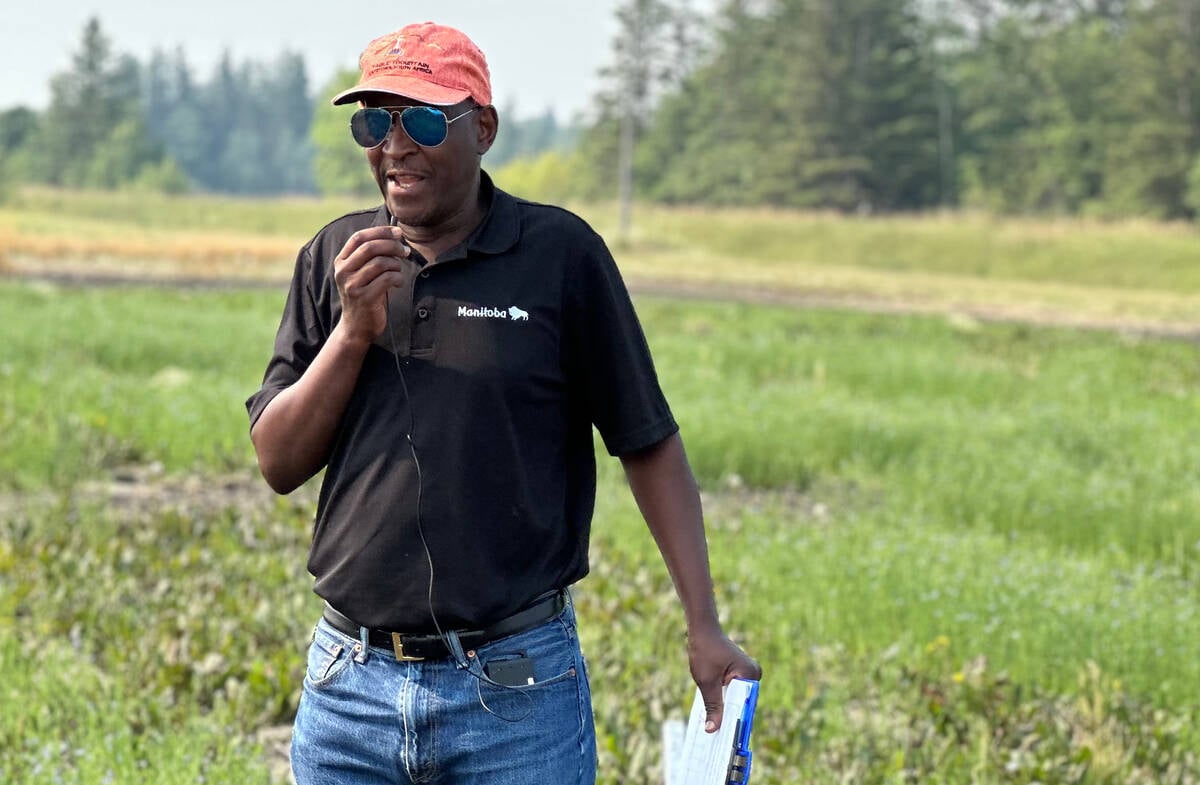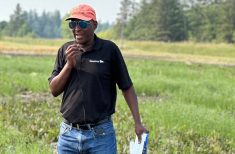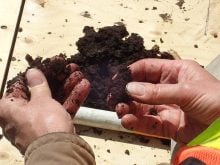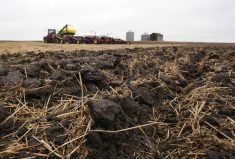Agronomists agree that 4R agricultural practices can take a bite out of nitrous oxide emissions, but exactly how big a bite depends on who you ask.
Central to this question is the federal government’s target for a 30 per cent reduction in nitrous oxide (N2O) emissions on farms by 2030.
Fertilizer emissions are a relatively new target in the battle against climate change. N2O is a greenhouse gas 300 times more potent in its warming effect than CO2. It accounts for about half of the warming effect of agricultural emissions.
Read Also

How much nitrogen can farmers really cut?
Manitoba fertilizer trials look for nitrification inhibitor sweet spot, to lower greenhouse gas emissions and cost without hurting yield.
N2O is produced by microbes as they process nitrogen in soils. While all soils emit N2O, farm soils generally emit more because of fertilizer inputs.
“Can we do the 30 per cent? I think so,” said Mario Tenuta, Senior Industrial Research Chair in 4R Nutrient Management and Professor (Soil Ecology) at the University of Manitoba.
Tenuta was a speaker at the Manitoba Agronomists Conference Dec. 14.
Why it matters: Farmers are being asked to reduce emissions, and 4R is often touted as the solution to the problem.
“In terms of its reduction of 30 per cent emissions, it is really just targeting the direct emissions from fertilizer use. We’re not even talking about the nitrate losses or the ammonia losses,” said Tenuta. “There’s lots of room for improvement.”
To reach the target, Tenuta said farmers will need to follow the principles of 4R stewardship and supplement those with the latest technology from the fertilizer companies, including enhanced efficiency products.
Much of Tenuta’s presentation involved sharing results from on-farm Manitoba studies on some of these products. One promising class of chemicals, known as nitrification inhibitors, consistently shows significant reductions in N2O emissions in a number of different trials, he says. When combined with 4R practices like side-banding, it can deliver greater reductions in N2O emissions.
“We can actually get the compound benefit here of the banding and have an inhibitor or a controlled release product,” said Tenuta.
He acknowledged that reaching the target will require more than being a good 4R manager and being open to new technology. It will also require cropping decisions like adding more nitrogen-fixing legumes into rotations.
“You grow soybeans, you grow alfalfa, you grow fava beans, you grow any crop that fixes its own nitrogen and you will get very little N2O,” Tenuta said. “It’s roughly the same as background.”
He is convinced the 30 per cent target is achievable.
Another speaker at the conference had a different view. Tom Bruulsema, chief scientist at Plant Nutrition Canada (PNC), spoke about use of 4R practices in international efforts to reduce N2O emissions, and zeroed in on Canada for part of his presentation.
Bruulsema said the 30 per cent emissions reduction by 2030 would require unrealistically high rates of adoption of 4R practices that are more advanced than the current framework suggests.
He said 4R practices can help lower emissions, as can high efficiency products like nitrification inhibitors. He pointed to a recently released study by PNC and Fertilizer Canada that looked at the economics of various emissions reduction practices.
According to that report, a 14 per cent reduction by 2030 is a more realistic target if crop yields are to continue to rise.
“The conclusion of the report is essentially that meeting this target would require either a very large cost share or it would result in reduced crop production,” said Bruulsema.
The federal government has incentive programs including the On Farm Climate Action Fund that offers farmers reimbursement for adopting beneficial management practices that store carbon and reduce greenhouse gases.
But Bruulsema said more is needed, and not just from government. It will require continued collaboration on all levels.
“Everyone needs to be working together if we’re going to be able to move 4R forward and actually attain reductions in emissions,” he said. “The fertilizer industry needs to collaborate to put 4R practices into sustainability standards.
“Agri-service providers need to facilitate farm reporting of 4R practices and outcomes, and farmers need to share data on their 4R practices and their outcomes. And of course, this is going to involve developing and building trust among agri-service providers, farmers and governments.”
Bruulsema also said he thinks governments need to recognize, incentivize and reward 4R practice adoption. Similarly, the food industry must recognize and reward 4R practices and sustainability standards, perhaps through labeling.
Scientists have a role in defining and describing 4R practice standards and quantifying their outcomes, and investors need to invest in the technologies, businesses and organizations that support 4R.
“It’s more than just applying the right source at the right rate, time and place,” said Bruulsema. “It involves both genetic improvement and improvements in crop management as well. We all need to work on this together.”
















